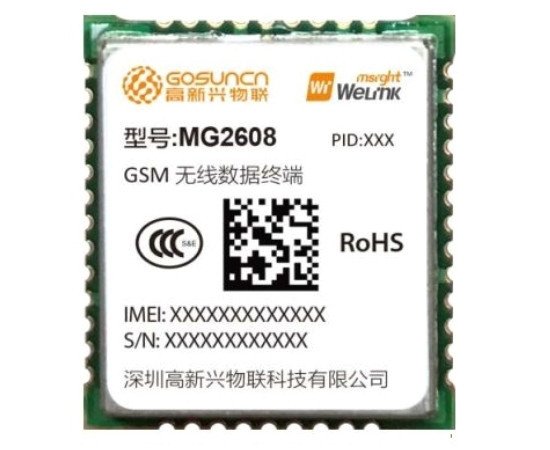GSM, GPRS, LTE and NB-IoT modules

Wi-Fi and Bluetooth do not always meet the requirements of the environment in which the designed device will work.
It is often necessary to use the existing infrastructure of a mobile operator to ensure that data can be transmitted to the cloud from there, over long distances, in places where Wi-Fi is not available.
In such situations it is worthwhile to use modern LTE or NB-IoT modules, depending on the expected throughput. Sometimes the GSM standard with GPRS extension is a good choice. It can be operated even by the cheapest systems, which can be successfully used for many years to come.
It should be noted that no 3G standard is mentioned in the list of mobile technologies. This is because the prevalence of LTE, which is in all respects better than 3G technologies, has resulted in the rapid shutdown of third generation infrastructure by operators. Second generation standards are still maintained, both because they are cheap to use and to provide even basic connectivity for customers who still have 3G modules or reach for inexpensive 2G modules.
A good example of such components are the modules of Gosuncn Technology Group, which is part of the large Chinese concern ZTE. The simplest model is the quad-band MG2608 module, supporting data transmission via GSM/GPRS. The slightly more advanced MG2608-G is additionally equipped with audio, SPI and I2 C interfaces. Often, the mobile network modules integrate receivers of satellite positioning systems - and this is what MG2609 is like, working with GPS, Beidou, Glonass, Galileo, QZSS and supporting SBAS.
For the most modern constructions we can recommend ME3616- E1A module, which operates in the fourth generation NB-IoT standard, in bands B1, B3, B5, B8, B20 and B28. If fast data transmission is required, the ME3630-E1C module, which operates according to the LTE FDD category 4, will help, and also supports WCDMA (one of the 3G standards) and classic GSM. All discussed modules of Gosuncn Technology Group are available as SMD components. Their range of supply voltages and operating temperatures depends on the specific product, with the most temperature-resistant MG2609 being able to operate in the range from -40 to +85°C.
|
|
ME3616-E1A |
||||
|
Module type |
NB-IoT (B1,B3,B5,B8,B20,B28) |
LTE FDD Cat.4/WCDMA/GSM |
GSM/GPRS, quad-band |
GSM/GPRS, |
GSM/GPRS + GPS/GNSS, quad-band |
|
Interfaces |
2UART/GPIO |
2UART/USB/SPI/I2C |
PCM/UART/GPIO |
AUDIO/2UART/SPI/I2C/GPIO |
AUDIO/UART/SPI/I2C/GPIO |
|
Supply voltage |
2.85÷3.6V |
3.4÷4.2V |
3.4÷4.2V |
3.4÷4.2V |
3.3÷4.4V |
|
Operating temperature |
-30÷75°C |
-30÷75°C |
-30÷75°C |
40÷80°C |
-40÷85°C |
|
Size |
18x6x2mm |
30x30x2.3mm |
17.7x15.8x2.3mm |
18x16x2.3mm |
17.6x15.7x2.3mm |
|
Package |
SMT 40-pad |
SMT 80-pad |
SMT 44-pad |
SMT 40-pad |
SMT/LGA 77-pad |





